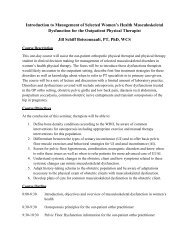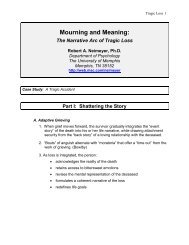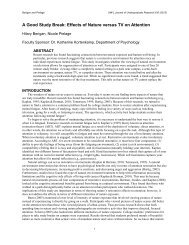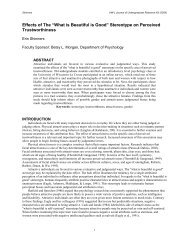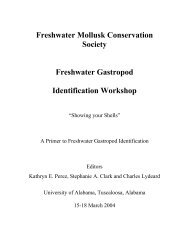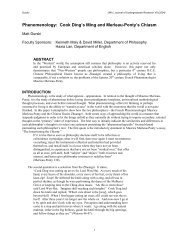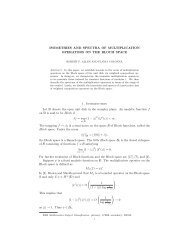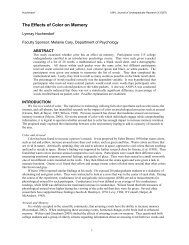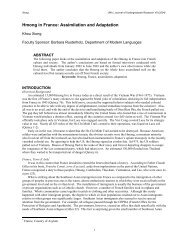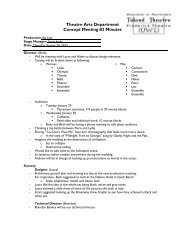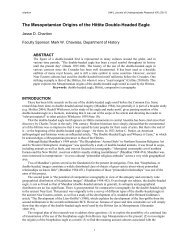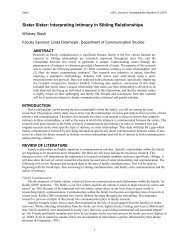A Guide for Terrestrial Gastropod Identification - University of ...
A Guide for Terrestrial Gastropod Identification - University of ...
A Guide for Terrestrial Gastropod Identification - University of ...
Create successful ePaper yourself
Turn your PDF publications into a flip-book with our unique Google optimized e-Paper software.
placed, or samples can be obtained by a stratified random sampling method, meaning that the<br />
quadrat is placed in an area randomly selected from other areas that area most likely to contain<br />
snails. The latter school <strong>of</strong> thought follows the knowledge that snails tend to be very patchy in<br />
their distribution. As discussed previously, land snails are most likely to be found near bases <strong>of</strong><br />
trees, rocks, under logs and various microhabitats that could otherwise be missed in a completely<br />
random selection <strong>of</strong> collection areas.<br />
Yet another method advocated by some researchers involves the use <strong>of</strong> cardboard sheets<br />
or masonite boards (Boag, 1982; Hawkins et al., 1998). The sheets or boards are placed at a site<br />
and left <strong>for</strong> a period <strong>of</strong> time to collect land snails on their undersides. As with all methods,<br />
various pros and cons exist with this technique. On the plus side, the sheets or boards can help<br />
collect species that may otherwise be found, such as some species <strong>of</strong> slugs. On the downside,<br />
cardboard sheets in particular need to be checked fairly <strong>of</strong>ten, as they are prone to warping and<br />
disintegrating in excessive rainfall. In general, if treating the use <strong>of</strong> sheets or boards as a<br />
quantitative method, the bias exists that more snails will be attracted to them than would<br />
normally be collected in the same two-dimensional area.<br />
Finally, a few words can be suggested regarding other details about land snail collecting.<br />
Be<strong>for</strong>e venturing to an area with collecting vials in hand, learn whether a permit is required to<br />
collect land snails there. If the area is a state park, federally-owned land (including U.S. Forest<br />
Service areas), or nature preserve, you will need to obtain a permit. If you happen to be<br />
collecting during a hunting season, it is advisable to wear bright colors, or even an orange<br />
hunting vest. And lastly, adhere to the basic rules <strong>of</strong> outdoor safety: it is safer to collect with<br />
another person, to have awareness <strong>of</strong> the animals inhabit the area (e.g. poisonous snakes), and to<br />
protect your exposed skin from encounters with poison ivy and biting insects.<br />
Enjoy land snail collecting. With well-recorded data to accompany your collected<br />
specimens, your work could be a valuable contribution to the knowledge, and ultimate<br />
preservation, <strong>of</strong> land snail species.<br />
14



